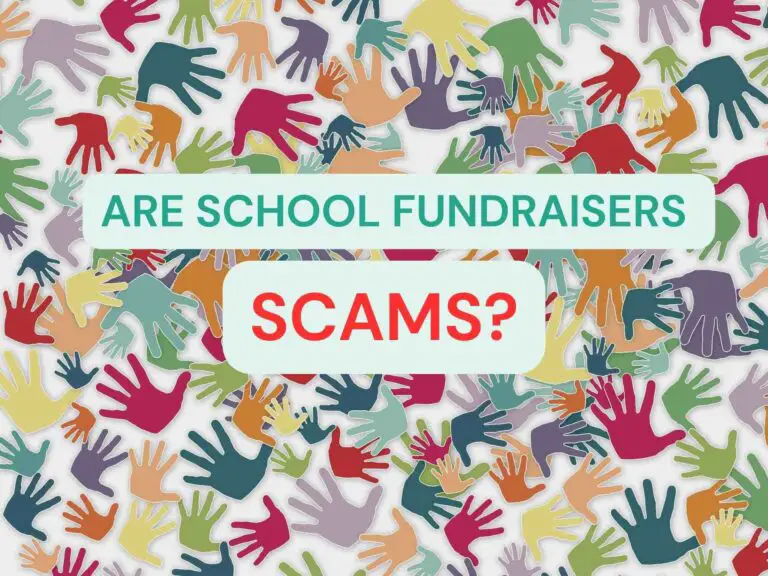8 Easy & Effective Science Club Fundraising Ideas
This post may contain affiliate links. If you purchase through one of these links, I may receive a small commission at no extra cost to you. As an Amazon Associate, I earn from qualifying purchases.

Looking for science club fundraising ideas but can’t think of one that’s easy to implement and effective at maximizing donations?
We understand your struggle. In today’s competitive educational landscape, running a science club is no trivial affair. Beyond the regular academic and logistical challenges, securing funds for ongoing activities and projects becomes a monumental task. Traditional popcorn sales fundraisers and car washes or have their merits, but they often fail to create the impact needed for sustainable operations. That’s where innovative and focused fundraising strategies come in.
When we talk about fundraising for science clubs, we’re discussing a multi-faceted approach. We’re not just aiming to raise quick cash; we’re establishing a sustainable financial model that also adds value to the students, the community, and the donors. In this comprehensive guide, we’ll dissect 8 specifically tailored and proven fundraising ideas for science clubs. These strategies have been scrutinized for efficacy, feasibility, and long-term impact. Each strategy will be explored in detail, including its concept, implementation steps, and potential revenue sources.
So, let’s dive in.
8 Proven Science Club Fundraising Ideas For Most Success

1. Science Fair
Science Fair for Donors is an excellent way to showcase the impact of the science club in a live, practical manner. Set up booths where you exhibit the impact of your ongoing experiments as well as conduct related live experiments. Booths with fun experiments and hands-on practical experience are excellent to attract students across all age groups as well as parents or guardians accompanying the students.
To draw the attention of larger donors, set up a booth or a presentation showcasing the year-long efforts of the science club, a few practical examples of the impact of these efforts, and the positive effect the science club has on the growth and development of students. Showcase the achievements, awards, and certificates earned by students actively participating in the science club. Share your vision for the science club and how contributions from large donors would help expedite the journey toward the goal.
Make sure the entire fair is a visual treat – one that offers a highly engaging experience. The feel of the fair should be festive, celebratory, and the kind that creates a lot of buzz around it. It should be fun enough for students to look forward to it as an annual tradition.
The primary revenue sources for an event of this sort would be in the form of participation fees earned from students and the guests accompanying them. But to truly maximize the donation potential of a science fair, invite large donors in the form of corporations, local business owners, and alumni from the field of science to the event and invite big money donations from them.
2. Virtual Science Webinars
Virtual Science Webinars serve as a high-impact, low-overhead fundraising tactic for science clubs perfect for use as a fundraiser for small schools. This strategy involves hosting online seminars about trending scientific topics, featuring expert speakers to attract a broad audience. The immediate return on investment comes through registration fees.
For maximum return on investment and effort, focus on webinars substantial where the topic is compelling and the speaker renowned.
To elevate this strategy, focus on advanced promotion through targeted social media campaigns, academic forums, and personalized email invites. It’s critical to choose a webinar platform that is reliable and offers seamless streaming to ensure that attendees get value for their time and money, therefore making them more likely to donate.
But don’t stop at registration fees. Corporate sponsorships offer another lucrative revenue channel. Companies in tech, pharma, and other science-related industries often seek opportunities to align themselves with educational initiatives. Offering them co-branding or sponsored content opportunities during the webinar can draw in significant funds.
Importantly, recording the webinar transforms a one-time event into a long-term asset. By offering paid access to the recorded session along with additional educational materials, the science club can generate continuous income long after the live event has ended.
Executing a flawless webinar is non-negotiable; it sets the stage for future webinars and cements your science club’s reputation as a credible, valuable source of scientific knowledge. This strategy, when optimized, becomes more than just a fundraising activity. It acts as an investment into the club’s future, boosting its reputation and facilitating a more substantial, diversified inflow of funds.
3. Science Kits for Kids
Selling Science Kits for Kids unlocks a powerful revenue stream for science clubs, functioning as both an educational endeavor and a reliable fundraising strategy. These kits, filled with experiments and activities, target a broad market from enthusiastic parents to educational institutions.
Start by sourcing high-quality, low-cost materials for the kits and focus on themes like basic chemistry or astronomy to keep the kits educational and engaging. Prioritize creating a strong online storefront and utilize social media channels for advertising. Income flows not just from individual sales but from bulk purchases by schools and educational programs.
The key to elevating this strategy lies in strategic partnerships. Forge alliances with educational retailers or even local businesses interested in STEM promotion. These partnerships provide a two-fold benefit: they handle bulk distribution, saving on shipping costs, and often agree to purchase the kits outright, resulting in immediate cash inflow. This is an overlooked aspect many clubs fail to capitalize on, but it’s an essential revenue booster.
Don’t underestimate the subscription model. Parents and educators look for ongoing educational opportunities. Offering subscription options for quarterly or bi-monthly kit deliveries ensures a stable, recurring income source.
4. Research Papers and Reports
Selling Research Papers and Reports is a direct, no-frills approach to fundraising that caters to academic institutions, researchers, and businesses in need of in-depth scientific data. Science clubs generate these papers and reports by conducting research, compiling data, and offering insightful analyses.
To make this profitable, identify niche but in-demand topics. Once the research is conducted and the papers are written, market them through scholarly databases, academic networks, and even LinkedIn to attract high-value customers like universities and research institutes. Your income stems directly from the sales of these papers and from licensing fees for ongoing usage.
Expanding this venture involves leveraging relationships with academic publishers. A formal agreement with publishers to feature your work translates into broader exposure and higher citation rates, which in turn drive sales. The advantage here is twofold: you gain immediate revenue from the publisher’s upfront payment and long-term income from individual or institutional purchases down the line.
Do not overlook the corporate sector; businesses often require specific research but lack the resources to conduct it themselves. Tailoring research to meet the needs of these organizations can yield large, one-time payments or establish long-term contractual relationships.
To sum it up, selling Research Papers and Reports turns the club’s intellectual efforts into a monetizable product. This strategy not only pads the club’s coffers but elevates its standing in both the academic and corporate communities, making it a viable and long-term fundraising avenue.
5. Eco-friendly Product Sales
Eco-Friendly Product Sales offer a straightforward fundraising channel that aligns perfectly with the science club’s educational mission. By selling products like reusable bags, solar chargers, or eco-friendly stationery, the club can generate immediate income. Source these products from verified, eco-conscious suppliers and sell them both online and during club events.
The key is in the pricing; ensure a healthy markup that balances profitability and customer willingness to pay. Revenue isn’t just from individual sales; offering bundle discounts can attract schools or offices looking for bulk purchases.
Like with every other fundraising idea for science clubs listed above, what truly amplifies this revenue channel is the involvement of corporate sponsors committed to sustainability. Companies with a green mission are ideal partners; they’re often willing to buy these products in large quantities for their employees or clients. This not only boosts sales but can also result in a lump-sum upfront payment, providing immediate cash inflow to fuel other club activities.
6. Science-Themed Merchandise
Selling Science-Themed Merchandise is a no-nonsense fundraising strategy designed to resonate with students, educators, and the general public. Think T-shirts with famous scientific equations, mugs featuring iconic scientists, or lab kits branded with your science club’s logo. The immediate source of revenue comes from direct sales, whether that’s through an online storefront, at club events, or partnerships with local educational stores. To maximize profitability, opt for a print-on-demand service, which minimizes upfront costs and allows for product variety without the need for bulk ordering.
Now, to unlock the real potential of this strategy, focus on limited-edition releases around significant scientific anniversaries or events. These exclusive launches create urgency, driving up sales in a short period and can attract attention from science enthusiasts who are willing to pay a premium. This elevates your income level and allows you to invest back into the science club’s core educational and research activities.
Corporate partnerships are another untapped revenue multiplier. Businesses in technology or science sectors are ideal candidates for co-branded merchandise. They get to associate their brand with education and innovation, and your science club enjoys the financial backing of a corporate sponsor. It’s a win-win that results in a large, upfront payment and ongoing revenue sharing from merchandise sales.
7. Sponsor-a-Student Program
Initiating a Sponsor-a-Student Program is a direct, impactful fundraising strategy that appeals to individual donors and corporate sponsors alike. The program enables sponsors to directly fund a student’s participation in the science club, covering costs like membership fees, lab supplies, and field trips. This creates a transparent, one-to-one connection between the donation and its impact, making it an attractive option for donors. The immediate income comes from the sponsorship fees, which should be priced to not only cover costs but also contribute to the club’s general fund.
To scale this strategy, focus on offering tiered sponsorship levels, each providing a set list of benefits like regular project updates, exclusive invites to science club events, or even acknowledgment in club publications. High-value tiers can include invitations to private events with renowned scientists or exclusive previews of groundbreaking research. These tiers transform individual donations into long-term commitments, assuring a steady, recurring flow of funds into the science club.
Corporate involvement adds another layer of financial stability. Companies, particularly those in scientific fields, value the branding and goodwill associated with educational sponsorships. Securing a corporate partner can mean a lump-sum investment into the Sponsor-a-Student Program, often accompanied by commitments to offer internships or mentorships to sponsored students. A Sponsor-a-Student Program builds a network of individual and corporate supporters who are invested in the long-term success of both the students and the science club.
8. Science Trivia Night
Hosting a Trivia Night with a Science Twist is an actionable fundraising strategy that packs both entertainment and educational value. The immediate appeal of trivia nights lies in the ticket sales, catering to a wide audience from students and parents to local community members.
Here, the key to maximizing revenue is a well-designed tiered ticketing system. Offer standard tickets for basic entry, and premium tickets that include extra perks like priority seating, free snacks, or exclusive merchandise. This not only drives up the average ticket price but also adds a layer of exclusivity that encourages attendees to opt for the higher-priced options.
To escalate this venture, incorporate sponsored quiz rounds. Local businesses or even large corporations, especially those involved in science or education, often jump at the opportunity to sponsor individual rounds of trivia. In return, they get brand exposure and the opportunity to engage with a captive audience. This equates to a solid, upfront cash inflow, supplementing ticket sales and providing additional financial backing for the event.
Subscription-based virtual trivia nights present another avenue for recurring revenue. In a world increasingly comfortable with virtual events, offering a monthly online trivia event can engage a global audience and convert a one-time event into a continuous revenue stream.
Final Thoughts
In sum, science club fundraising isn’t merely an exercise in generating revenue; it’s an innovative endeavor that galvanizes communities, propels educational missions, and provides tangible value.
Whether you’re launching a donor-centric Science Fair, hosting Virtual Science Webinars, crafting Science Kits for Kids, publishing Research Papers, or retailing Eco-friendly Products, each strategy serves dual purposes. Not only do they enrich the educational experience for students and stakeholders alike, but they also ensure the sustainability of your club’s initiatives.
Implement these targeted, high-impact fundraising ideas to unlock unprecedented levels of financial support and community engagement. Armed with these strategies, your science club will secure its place as both a center of academic excellence and a dynamic, self-sustaining entity.






